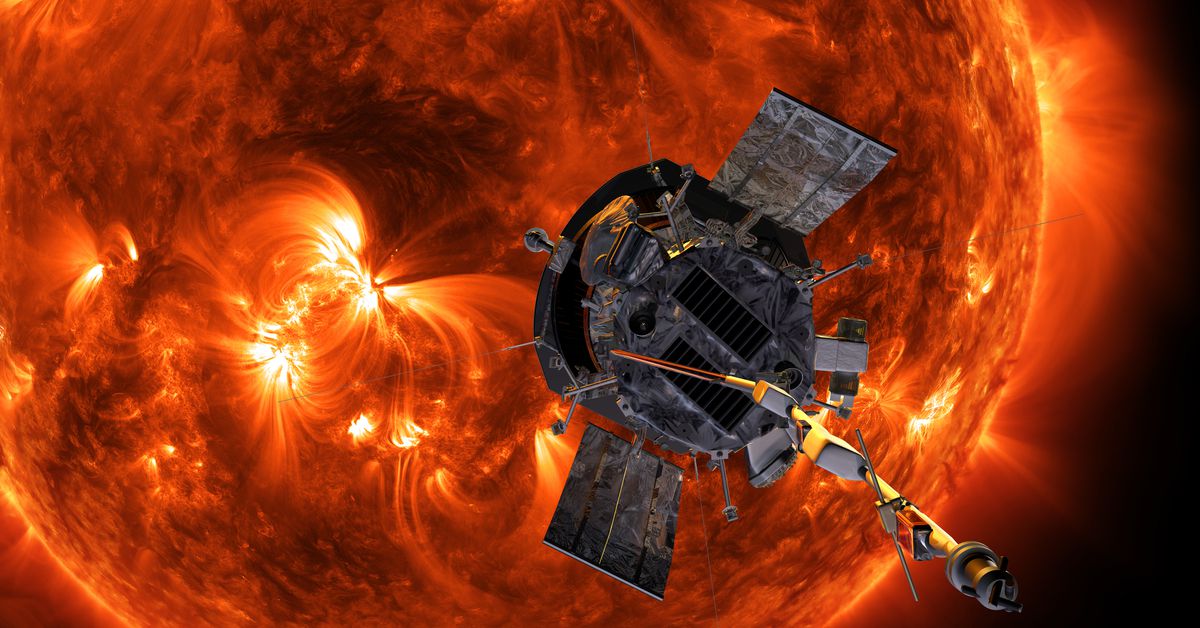Mission Overview
Launched in 2018 by NASA and the Johns Hopkins Applied Physics Laboratory, the Parker Solar Probe is a groundbreaking mission designed to study the Sun’s corona, the extreme atmosphere that surrounds our star. Unlike previous solar probes, which operated farther from the Sun at millions of miles, the Parker Solar Probe reached an unprecedented proximity of just 3.8 million miles — or approximately 60 million kilometers — from the Sun’s surface. This closest approach is significantly closer than any man-made object has ever been to our star, marking a historic milestone in solar exploration.
Achieving Proximity
The Parker Solar Probe set off on its mission on December 20, 2023, and its closest approach occurred on December 24 as it flew at an impressive speed of over 430,000 miles per hour past the Sun’s surface. This velocity allowed the probe to achieve its remarkable proximity while avoiding a direct collision — thanks in part to NASA’s advanced navigation systems.
Isolation and Observation
During this critical period, mission operations were entirely separated from Earth communication with the probe, ensuring uninterrupted data collection and analysis. This isolation was crucial for maintaining accurate observations of the Sun’s dynamic environment without external interference potentially skewing results.
The Significance of Proximity
The Parker Solar Probe‘s ability to get so close to the Sun has far-reaching implications for our understanding of solar phenomena, including solar wind dynamics and high-energy particle acceleration. By studying these aspects up close, scientists hope to gain deeper insights into how the Sun’s corona is heated to millions of degrees and how particles reach speeds nearing light.
Solar Wind Dynamics
One of the primary goals of this mission is to better understand solar wind, a stream of charged particles emanating from the Sun that plays a vital role in Earth’s magnetic field. Observing solar wind particles up close will help scientists model their behavior more accurately and predict space weather events, which are critical for protecting satellites and communication systems.
High-Energy Particles
The Parker Solar Probe‘s design includes an advanced heat shield capable of withstanding extreme temperatures — reaching approximately 2,500 degrees Fahrenheit (4,230 Celsius) on the Sun’s surface. Meanwhile, the probe itself remains a cool 85 degrees Fahrenheit, allowing for precise temperature control and scientific instruments to operate optimally in this intense environment.
Mission Progress
The Parker Solar Probe has successfully navigated its way closer than ever before, transmitting signals back to Earth on December 26th. According to NASA, the probe is operating "in good health and operating normally," with all systems functioning as intended. This achievement underscores the success of the mission’s complex engineering and operational challenges.
Future Missions
With this successful close encounter, NASA now looks ahead to a series of planned data transmissions from the Parker Solar Probe on January 1st, providing updated telemetry data on its status and progress. These readings will be crucial for further advancing our understanding of the Sun’s corona, solar wind, and high-energy particle behavior.
Conclusion
The Parker Solar Probe‘s journey to an unprecedented proximity of the Sun has not only set a new standard in solar exploration but also paves the way for future missions. By studying these extreme conditions up close, scientists can unlock new insights into our Sun’s inner workings, benefiting humanity’s understanding of space and its potential impacts on Earth.
This historic mission continues to highlight NASA’s commitment to advancing our knowledge of the universe through cutting-edge technology and scientific exploration.
